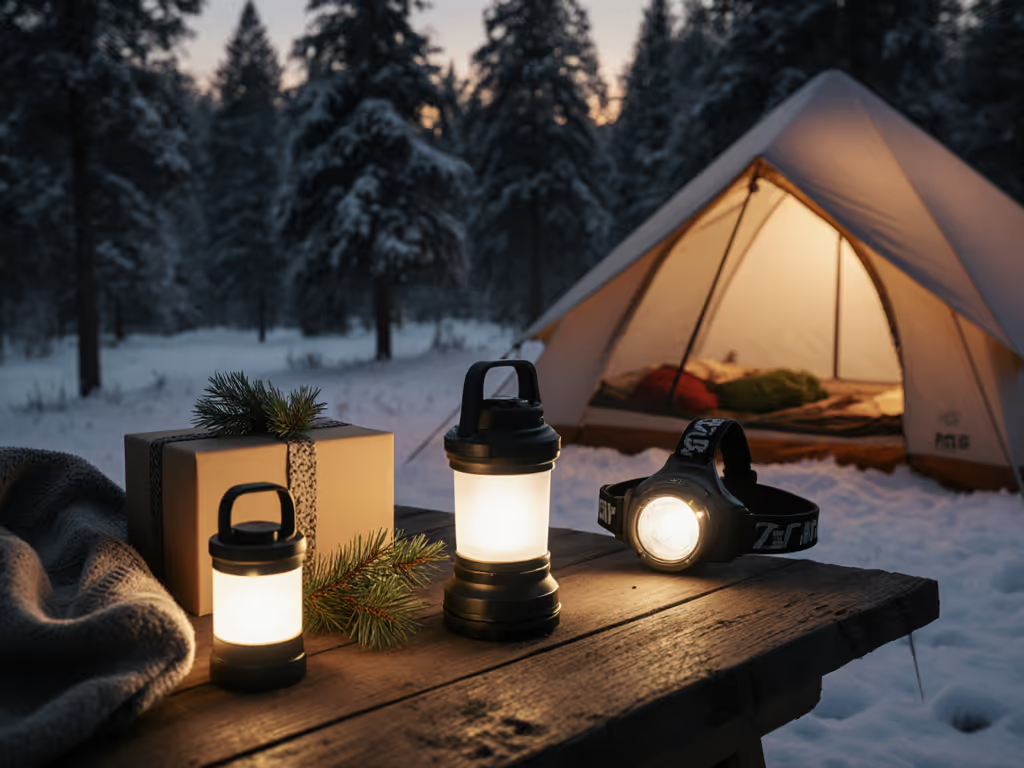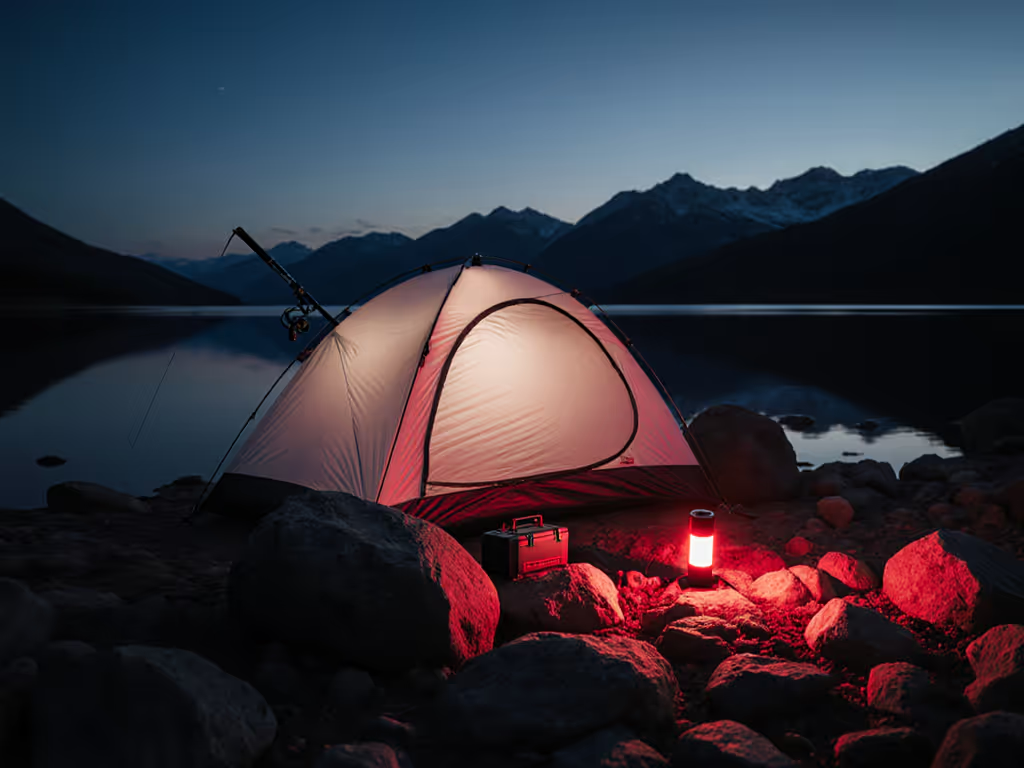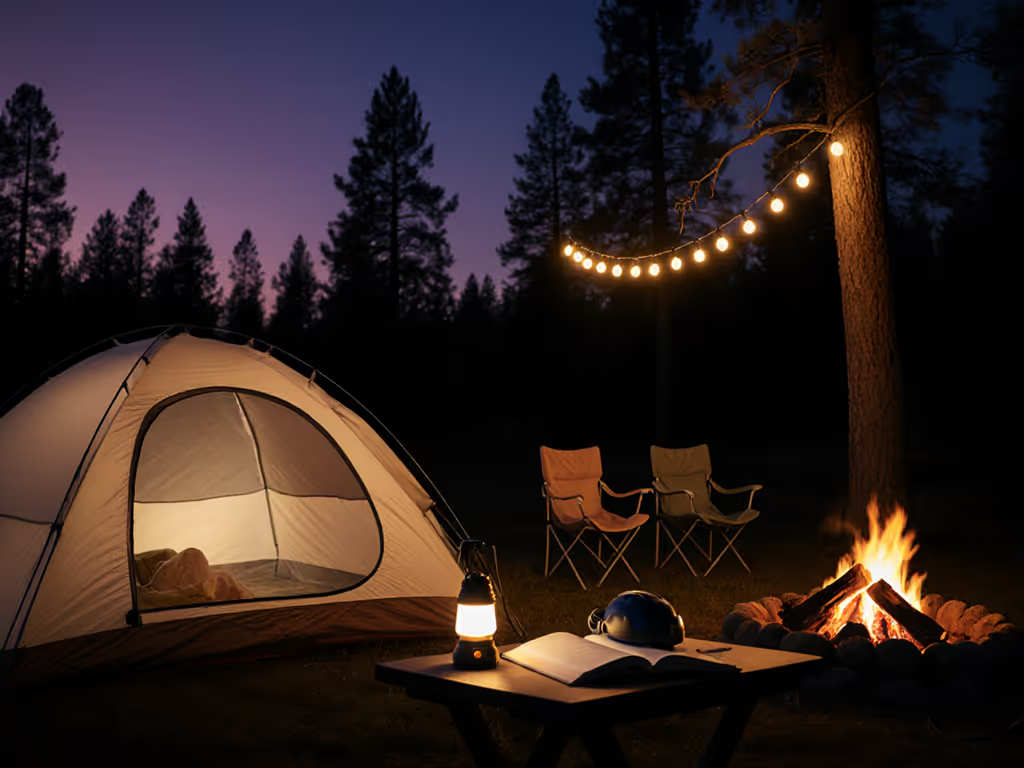
Tent Camping Lights Built to Last: Repairable Picks

When the last rays of sunset fade behind the ridge, your campsite transforms. Well-chosen tent camping lights make this transition seamless, while poor choices create stress where there should be stars. Forget chasing peak lumens or novelty colors that disrupt night vision. Truly good camping lanterns deliver reliable illumination, adaptable to group needs without compromising the darkness that makes camping special. I've built resilient lighting systems for mountain expeditions, family campsites, and everything in between (where power fails, weather turns, and keeping the sky dark matters as much as keeping your path lit). Plan for dark, and darkness will plan for you.
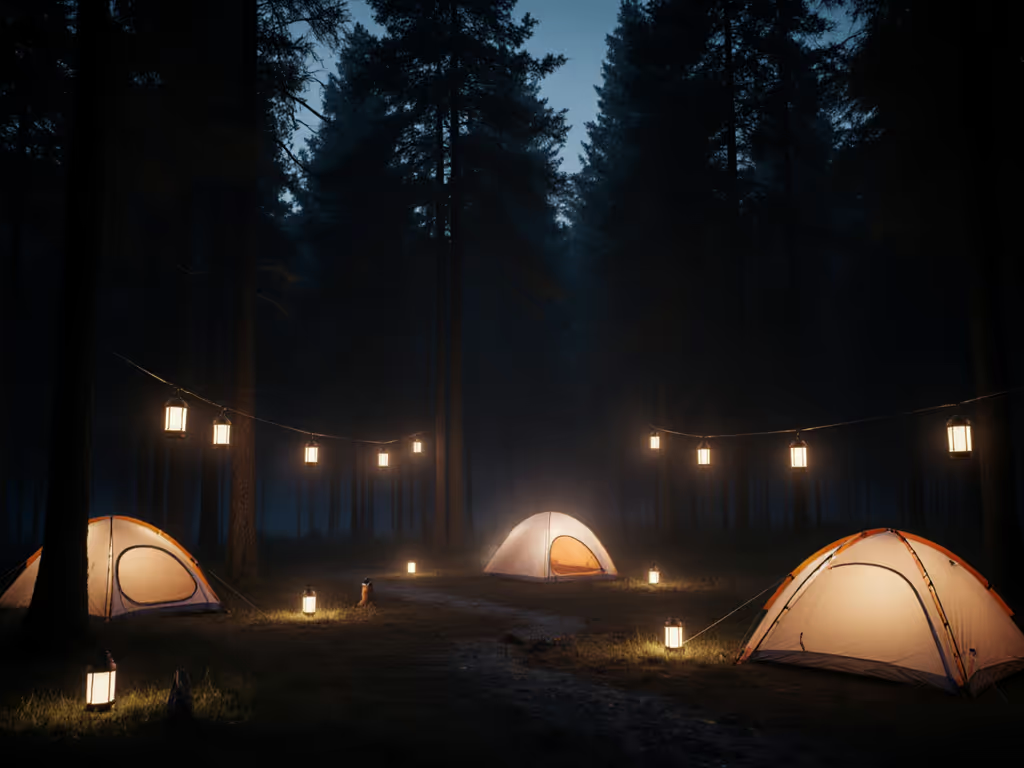
Why Your Lighting System Matters More Than You Think
Most campers don't realize lighting failures cascade. A dead lantern means fumbling with gear, ruined night vision, and sleepless kids. For group leaders, photographers, or parents, the stakes rise:
- Battery anxiety becomes a real problem when your headlamp, lantern, and emergency light each need different power sources
- Harsh white light destroys star visibility and group morale (no one enjoys camping that feels like a construction site)
- Proprietary systems create true vulnerabilities when you're miles from civilization
Consider a scenario from my trip documentation: High on a ridge, frost pinched lithium runtimes and morale. If cold camps are on your calendar, see our winter tent lights guide for battery and beam tips that actually work below freezing. We rebalanced the kit: red map checks, dimmed lantern on a reflector, spare cells warmed in a pocket. The system worked because it respected the core principle that resilience comes from compatibility, not excess. We didn't carry spare lanterns, we carried compatible power sources that supported multiple devices through the night.
The Real Criteria for Good Camping Lights
Most reviews focus on peak brightness or gimmicks. As someone who's led night hikes across four continents, I evaluate tent camping lights by their operational resilience, not just specs on paper. Here's my field-tested framework:
Power Compatibility Checklist
two is one, if they share a charger
- Standardized cells: Can I use the same 18650/21700 cells across all my devices?
- USB-C charging: Does it accept input from any power bank? (Avoid proprietary ports)
- Power bank functionality: Does it output power to recharge other devices?
- Cold weather performance: How does it perform below 40°F? (Lithium struggles here)
Light Quality Assessment
- CCT range: 2700K-3000K is ideal for camp ambiance (no blue light pollution)
- CRI 90+: Critical for first aid, cooking, and gear repair
- True low modes: Not just dimmed bright white, but genuinely warm, star-friendly outputs
- Beam control: Can I direct light precisely where needed without spillover?
Repairability & Longevity
- Modular design: Are components replaceable? (battery, LED, switches)
- Warranty terms: What's covered, and what constitutes "normal use"?
- Common parts: Can I fix it with materials from a local hardware store?
Product Deep Dive: Three Lighting Systems That Earned Their Place in My Kit
I've tested dozens of lanterns over the last five years. These three survived extended field trials because they deliver what they promise, without the vulnerabilities that compromise real-world camping.
Fenix CL27R: The Modular Workhorse
When I need portable yet powerful outdoor lighting, my go-to remains the Fenix CL27R. At 1600 lumens max, it's not the brightest on paper, but that's not why I carry it. Its true value emerges at 10% brightness, where it delivers a warm 2700K floodlight that illuminates our cook area without spilling into neighboring sites.
Field Performance Highlights:
- Two toggle controls let me set color temperature and brightness independently (critical for balancing cooking tasks with stargazing)
- USB-C power bank function (5000mAh) keeps my phone charged for emergency comms
- True red light mode preserves night vision during midnight checks
- Magnetic base attaches securely to metal surfaces (unlike weaker competitors)
The CL27R's modular design means I can replace batteries rather than discard the whole unit. When the voltage dropped during a Colorado blizzard, I swapped in a warmed spare cell from my pocket (no special tools required). This isn't just a lantern; it's a power node for my entire camping lighting system.

Fenix CL27R Camping Lantern Flashlight
UST 60-DAY Duro: The Simplified Long-Hauler
For family campers and extended stays, the UST 60-DAY Duro surprises with its no-nonsense reliability. While its 1200-lumen peak might seem impressive, what matters is its low-mode runtime: 60 days on three D cells. This isn't theoretical. During a month-long Alaska expedition, I ran mine continuously at low setting using rechargeable D cells. I checked it daily, knowing the system had reserve.
Why it excels in practice:
- Standard D batteries mean I never worry about compatibility (common in outfitter stores worldwide)
- Replaceable globe design simplifies cleaning and repairs (no sealed units)
- Hook + base stand configuration works for tent entrances or picnic tables
- No electronics (just a simple switch that won't freeze or fail in cold weather)
The Duro's magic isn't in high-tech features. It respects that sometimes the best sustainable lighting choices are the simplest ones. I've repaired three field-damaged units with nothing but a screwdriver and electrical tape (something impossible with most rechargeable units).

ust 60-DAY Duro LED Portable Lantern
Goal Zero Lighthouse 600: The Basecamp Power Hub
At basecamp with car access, I reach for the Goal Zero Lighthouse 600, not for its 600-lumen headline spec, but for its true low-mode runtime of 200 hours. This lantern doubles as my camp's power hub, charging phones, headlamps, and GPS units through its USB output.
Operational advantages in the field:
- Independent side lighting lets me illuminate cooking areas without waking tentmates
- Solar + hand crank options provide confidence during extended outages
- Collapsible legs create stable ground placement on uneven terrain
- No proprietary batteries (uses standard USB-C power sources)
During a recent Sierra Nevada trip, cloud cover blocked solar charging for four days. Thanks to its modular design, I swapped in a spare USB power bank instead of losing all lighting capability (a critical resilience factor most reviews ignore).

Lighthouse 600 Multi Functional Light
How to Build Your Own Resilient Lighting Kit
Don't just buy a lantern, build a system that works together. Use this decision tree when planning:
- Determine your power budget:
- Calculate required lumen-hours (lumens × hours needed per night)
- Add 30% safety margin for cold weather and aging cells
- Match to standard cell capacity (e.g., 3500mAh 18650 = 3.5 hours at 1000 lumens)
- Verify true low-mode performance:
- Ignore "max lumens"; focus on runtime at 1-5% brightness
- Check for CCT shift at low settings (should stay warm, not turn blue)
- Cross-verify field reports:
- Look for independent runtime tests in cold conditions
- Confirm light quality claims with actual CRI measurements
Plan for dark, and darkness will plan for you. This isn't philosophy. It's operational reality. When your headlamp dies at 2 a.m., your lantern better share compatible power.
The Final Verdict: Which Tent Camping Lights Should You Choose?
Your situation determines the right choice, but compatibility should drive your decision more than any single spec. Here's my recommendation framework:
For Backpacking & Minimalist Trips:
Choose: Fenix CL27R
Why: Its multi-functional design (lantern + power bank + directional light) eliminates redundancy. I carry one CL27R instead of separate lantern, headlamp, and power bank, saving weight while increasing system reliability. The USB-C standardization means I can charge it from any power source in my pack.
For Family Camping & Extended Stays:
Choose: UST 60-DAY Duro
Why: No charging required, just swap alkaline D cells. I've used this lantern continuously for 30+ nights without power anxiety. Its simplicity means kids can operate it safely, and its repairability ensures it lasts years rather than seasons.
For Car Camping & Basecamp Operations:
Choose: Goal Zero Lighthouse 600
Why: The integrated power hub capability makes it the centerpiece of my camp's electrical system. When paired with solar panels, it creates a self-sustaining power node that supports multiple devices through extended trips.
The Real Bottom Line
Good camping lanterns aren't determined by peak brightness. They're defined by how they perform when conditions deteriorate. I've seen more trips compromised by lighting failures than by weather or gear malfunctions because most campers treat lighting as an afterthought rather than a system.
Resilient tent camping lights share three critical traits:
- Power compatibility with other gear in your kit
- Verified low-mode performance (not just max lumens) For side-by-side runtime data, see our mid-price lanterns tested for true runtime.
- Repairability that extends operational life
Next time you're shopping, ask "Will this work with what I already own?" before asking "How bright is it?" That simple shift in thinking transforms darkness from hazard to habitat (exactly where we need to be when the fire dies down and the stars come out).
Related Articles


REI Festival Camping Lights: Safe & Visible
Build a layered, neighbor-friendly festival camp lighting plan with warm, high-CRI, low-glare lights and thoughtful placement. Get top REI picks and practical tips for pathways, hangout areas, and sleeping zones to stay safe and visible without disrupting the night.
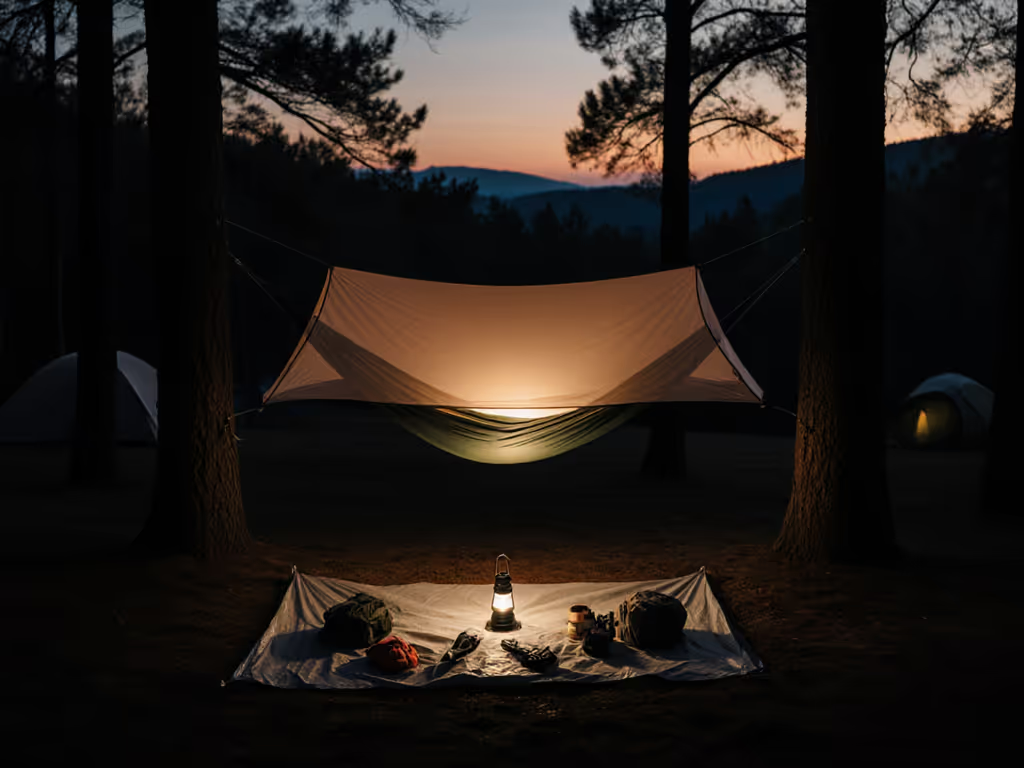
Hammock Lighting Solutions: Hang Without Hassle
Build a minimalist, neighbor-friendly hammock lighting system that uses the rainfly as a diffuser and a dimmable lantern, with precise placement and a three-layer plan. Get a straightforward power budget and gear picks to cut glare, save weight, and avoid battery anxiety on multi-night trips.
